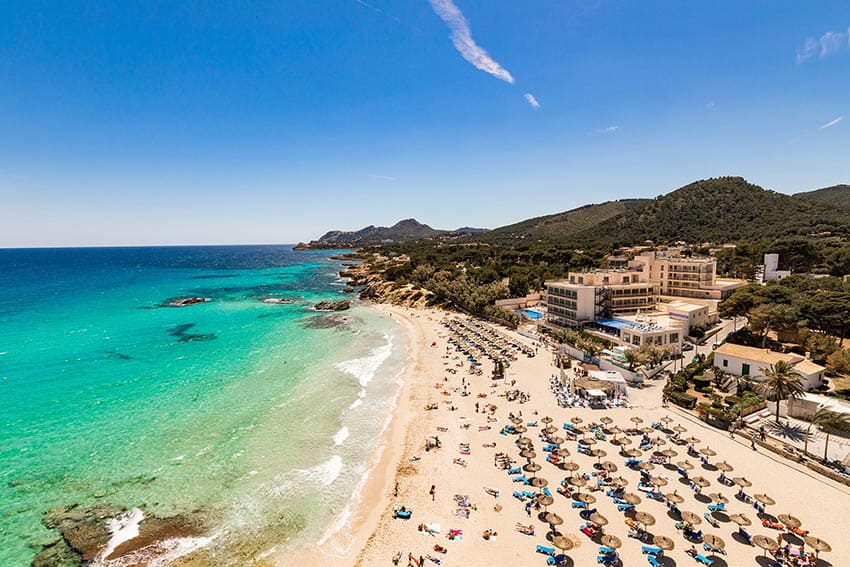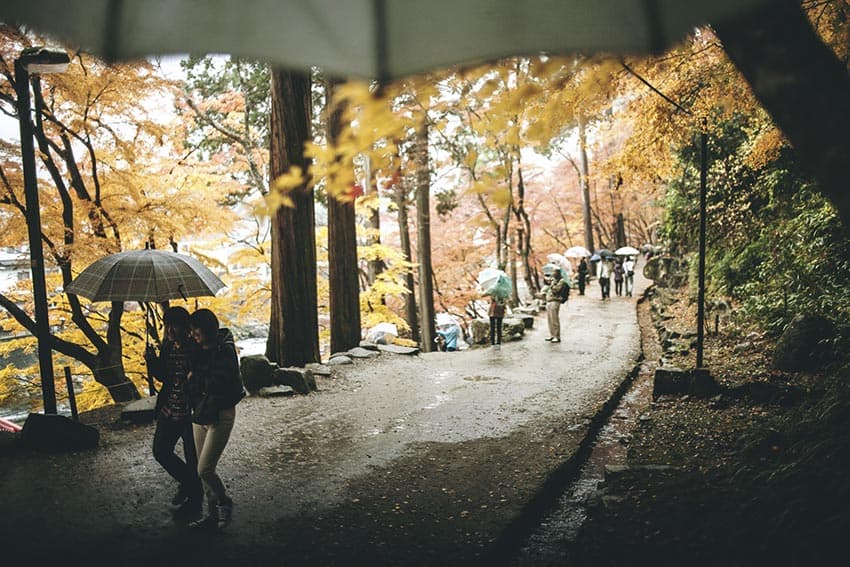
Central Japan has a quiet, peaceful beauty that drips from the trees and sinks into your skin
By Andy Christian Castillo
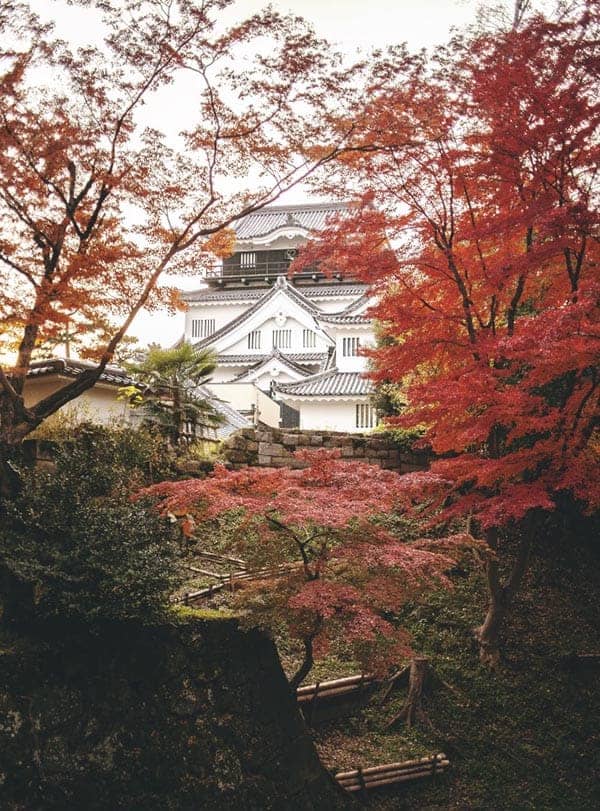
Waning sunlight streamed through Japanese maple leaves, stark against drab conifers, and even more saturated than my New England home’s iconic sugar maples in all their autumnal glory.
Emerging from between red leaves, which shifted gently in a cool breeze, Japan’s Okazaki Castle rose into the golden dusk.
Not far away, a black loon leaped from the bank of a pond, skimming low over the surface and landing again in an explosion of wings.
I stood across a dry moat inhaling that sweet scene; watching as the orange sun dipped below the white castle’s topmost roof. Birdsong filled the air, and my heart burst with adventure.
It was the Japan I’d waited to see – full of culture, history, and beauty.
Ancient Central Japan
Japan is old.
The longer I spent exploring the region around Nagoya the more I sensed that – it’s not uncommon to visit a structure or see a tree that’s over 1,000 years old.
According to the Ancient History Encyclopedia, the first signs of agriculture on what’s now known as Japan date back about 7,000 years. More recently (and that being relative), starting in the 10th century, military nobility called Samurai ruled from strongholds like Okazaki Castle.
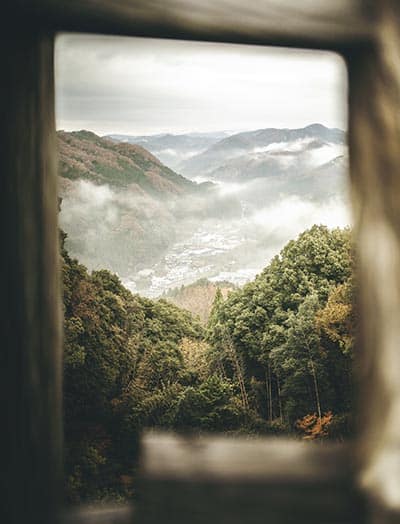
Samurai was abolished in the late 1800s. But these days, “every man has a samurai spirit,” said my guide, Yoshiko Tomiyama, referring to central Japan’s proud heritage.
This is exemplified especially well in Iga City, a region that housed two of the most famous ninja schools.
Ninja characters can be seen throughout the city.
There’s even a ‘ninja train’ decorated with martial arts decor, a museum dedicated to ninja history (Iga-ryu Ninja Museum, including a ‘ninja show’).
And a ‘cat ninja’ lives in Green Tea Shop, which isn’t far from a restaurant owned by a man whose ancestor was a ninja.
Rich cultural traditions
Japanese culture is so rich because traditions have been passed down through generations with little change.
A framework of hierarchy and skill-based teaching are melded into society. Knowledge seamlessly flows from old to young on into the future.
For example, the main building at Geku shrine (one of 125 Ise Jingu Shinto shrines collectively dedicated to the sun goddess) is torn down and rebuilt next door every 20 years.
And every day for the past 1,500 years, since the shrine’s inception, food has been offered to the sun goddess. Every year 57,000 pieces of clay pottery are made and then returned to soil the following day.
Moving the Bridge
Geku shrine is not exclusive in this practice. Many buildings at Ise Jingu shrines change locations periodically. And it’s not just buildings. A wooden bridge spanning the Isuzu River leading to Naiku shrine traversed yearly by about five million people, is also moved every 20 years.
While this constant recreation has deep roots in Shinto belief – specifically, that some deities move periodically, and that nothing lasts forever – it also serves to teach religious rituals and construction techniques to the next generation.
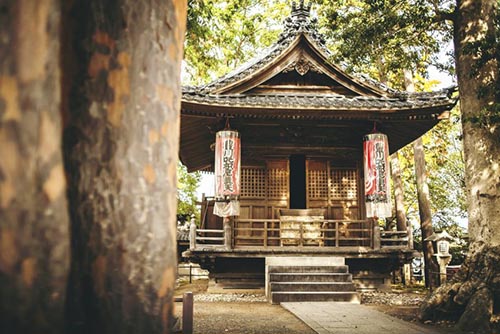
Religion and social norms in Japanese society are intrinsically infused. That’s why there’s no litter on streets or sidewalks.
Everything Has a Spirit
“Everything we have is a blessing from the divine. Everything has a spirit,” Tomiyama explained while driving from Nagoya-Chubu International Airport soon after I’d landed.
“It’s part of our lifestyle. If we keep the earth clean, we believe good luck will visit our house. This is such a part of our daily life,” Tomiyama said.
Japan’s religion runs deep. I literally felt it while exploring Toyokawa Inari Temple, which is believed to grant prosperous business.
The knees and belly of a statue of Daikokuten, a spiritual figure, were indented because so many people had rubbed it for good fortune. And surrounding the temple’s main shrine were thousands of foxes – donated by people whose petitions were answered.
Fox statues are significant at the shrine because foxes eat birds. In ancient days, birds destroyed crops, which in turn hurt business. Thus, the fox symbolizes business success.
Japanese maple trees
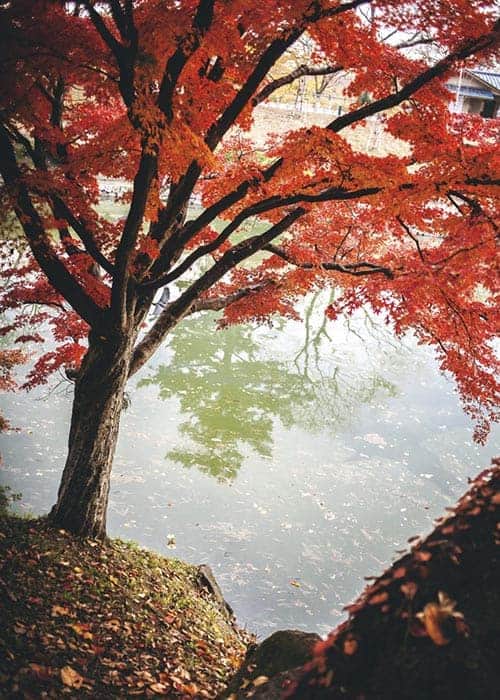
Most notable are the many Japanese maple trees in Korankei valley near Asuke town.
Mount Iimori
I traveled in November, just past peak bloom, and walked a path not far from the city that leads up Mount Iimori, known locally for its spiritual elements. The mountain was covered with thousands of vibrant maple trees.
Near the top, I found a Shinto temple, and across a river on Taigetsukyo Bridge explored a historic replica village, Yashiki Village. I traversed a riverwalk on the way back lined with native food vendors.
A short drive from the city is Asuke Castle, an ancient military fortification on top of a hill. The grounds surrounding the castle are beautiful. Dirt paths wind through Japanese maples, toothpick pine trees and Moso, Japan’s giant bamboo shoots.
And from the castle’s topmost room it’s possible to see for many miles. When I was there, a soft cool breeze blew in from open windows, and maple trees burned with color on hazy mountaintops stretching off into a misty horizon.
- Chefchaouen, Morocco: The Hashish Farmer’s Home - January 13, 2020
- Moscow: Colorful Architecture Steeped in Military Tradition - December 23, 2019
- Moscow City Day Means Happy Revelers in Russia - September 16, 2019



